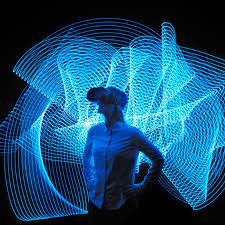1. Replenish your creative stock
Julia Cameron contends that, “In order to create, we draw from our inner well. This inner well, an artistic reservoir, is ideally like a well-stocked fishpond… If we don’t give some attention to upkeep, our well is apt to become depleted, stagnant, or blocked… As artists, we must learn to be self-nourishing. We must become alert enough to consciously replenish our creative resources as we draw on them — to restock the trout pond, so to speak.”
She advocates filling three pages a day with spontaneous writing, letting thoughts emerge without censorship. She also advocates taking two hours out of the week, to give yourself an “artist’s date” to engage in whatever strikes your fancy.
Writing morning pages and going on “artist dates” led me to finding my calling, and changing my career. I doubt I would have become a published author without these practices. So, get interested in something, and have fun exploring and experimenting. Creativity, play and learning, go hand in hand
2. Discovery through play
Play might sound frivolous in the face of the economic downturn we are contending with, but it may well be the catalyst that frees our imagination to conceive a sustainable future in business, economics and society. Through play we open our receptivity to imagination, intuition and daydreams.
While the rational mind is important, “We gain a new perspective when we learn how many of the greatest scientific insights, discoveries, and revolutionary inventions appeared first to their creators as fantasies, dreams, trances, lightening-flash insights, and other non-ordinary states of consciousness.
3. Reclaim your imagination
In science, the obvious role of imagination is in the context of discovery. Unimaginative scientists don’t produce radically new ideas. But even in science imagination plays a role in justification too. Experiment and calculation cannot do all its work. When mathematical models are used to test a conjecture, choosing an appropriate model may itself involve imagining how things would go if the conjecture were true. Mathematicians typically justify their fundamental axioms, in particular those of set theory, by informal appeals to the imagination.
4, Stuck in a box? Look at it from a Cubist perspective
It takes skill to distill the complexities of world around us into its essential components. Picasso and Braque, the inventors of Cubism, captured the essence of form by reducing subject matter into its most basic elements — the sphere, cube, and cone. They pioneered a new way of seeing, by simultaneously showing us multiple views of a subject from different perspectives in time and space. The outcome of their art is one of both simplicity and complexity.
This style of painting was born out of a desire to create a true representation of 3d reality in 2d space (the canvass). They depicted their subject matter from multiple perspectives because in reality, we don’t perceive the world around us from one viewpoint or focus. Cubism dramatically shifted our perceptions about how we perceive and interpret reality.
View your challenge through multiple perspectives in time (past, present, future) and space (from every angle you can think of) to spark new insights and creative ideas. Look for simple elegant solutions on the other side of complexity.
5. Develop your radar
Go to leading-edge art exhibits, groundbreaking theater, and visit trend-setting neighbourhoods. Marshall McLuhan said “Artists are the radar of the future.” They are the intuitive messengers of the future. What are they telling us?
Look for the symbols and metaphors that foretell change. Art is about learning to see and being willing to feel. In a world of change, success comes from looking for the next opportunity and having the ability to find hidden connections and insights into new products or services, desired by the customer. Developing the radar to spot an opportunity, takes creativity.


